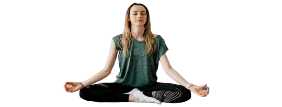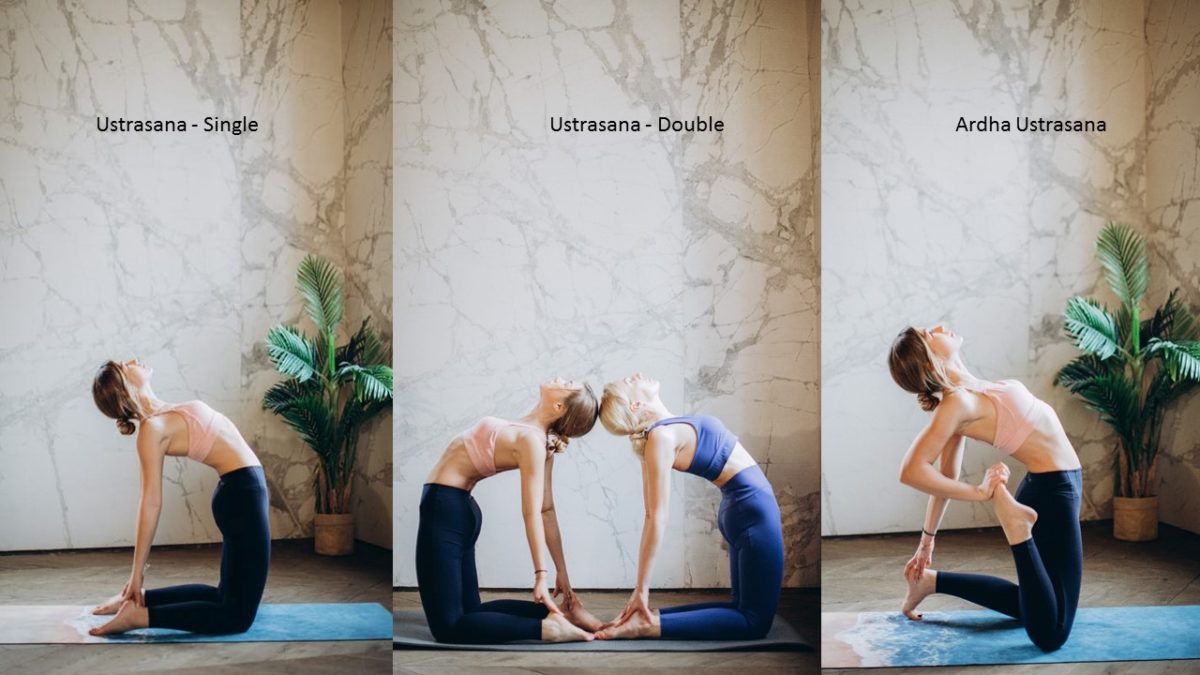Introduction
Ustrasana, also spelled as Ushtrasana, is one of the traditional back bending yoga poses in kneeling positions. I prefer to call it traditional rather than calling it modern, though it appeared in practice only in modern-day yoga.
It was not documented in yoga texts. We could trace the practice of this posture first in the lineages of Sri Krishnamacharya, the father of modern-day yoga. It does not necessarily mean that it is a modern yoga posture.
It has been a traditional yoga posture and its first appearance was found in the yoga practice of Pattabhi Jois and B.K.S. Iyengar. They have not invented this posture. Therefore I call this posture a traditional yoga posture.
Ustrasana Meaning
Ustrasana = Ustra + Asana. The Sanskrit work Ushtra means a camel and Asana means a yoga pose. The completed posture looks similar to a standing camel. Hence it gets the name Camel Pose.
Ustrasana Information
| Pose Name | Ustrasana Also Ushtrasana |
| Sanskrit Name | उष्ट्रासन |
| IAST | Uṣṭrāsana |
| Englsih Name | Camel Pose |
| Level | Intermediate |
| Origin | Traditional |
| Group | Dhanurasana |
| Type | Back Bending |
Ustrasana Procedure
Ustrasana Precautions And Contraindications
Since this being a pose that stretches the muscles of the Abdomen, pregnant ladies should avoid this posture. Also one should avoid this posture during her monthly periods.
Furthermore, those who are undergoing medical treatment for prolapsed discs, lumbago, sacral issues, sciatica, osteoarthritis, or shoulder issues should consult their doctor before attempting this posture.
Preparatory Poses
The practice of any minor back bending posture will help master Camel Pose. Anyhow, with the mastery of the following postures, it is convenient to master camel pose.
Ustrasana Steps
Step 1
First, Sit in Thunderbolt Pose. The knees should not be far apart. A little gap is enough in between the knees.
Step 2
Next, stand on the knees. Then lean backward. Reach your right heel and hold it with the right palm and similarly reach the left heel and hold it with the left palm.
Step 3
Now, push the abdomen forward and straighten and keep the thighs vertical. Slowly Bend the spine and the head back to the maximum. You should not force and overdo this step. You should feel comfortable altogether.
Step 4
Now the weight of the body is on the legs. Breathe normally. Retain the position as long as you feel comfortable.
Step 5
To release the position, bring the head and spine forward suitably adjusting the hand position. Then come back to Thunderbolt Pose.
Duration
Keep the final position for three to five minutes. If it is not possible for a long duration, the pose can be repeated for three to five rounds of one-minute duration
Follow up Poses
After the practice of Ustrasana, one must go for the practice of any one of the forward bending poses given below.
- Pascimottanasana
- Rabbit Pose
Rabbit Pose starts with Thunderbolt Pose which is the end position of Camel Pose. Therefore it is the most preferable pose after Camel Pose.
Ustrasana Benefits
The following are the benefits of Ustrasana.
- Camel Pose improves the flexibility of the entire spine and helps to remove the hunch back. Though this pose is good for backache, lumbago, and other spinal issues, one should perform this pose under competent supervision. If not rightly performed, it may aggravate the existing issues.
- It tones up the internal organs of the stomach. As a consequence, this improves digestion, removes constipation, and boosts the functions of the liver and adrenal gland.
- Camel Pose stretches the muscles of the chest region and the lungs. As a result, it helps conditions like Asthma and other respiratory issues.
- It stretches the neck region. Thus it stimulates the thyroid and thymus glands.

